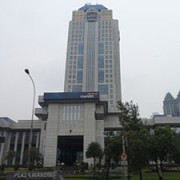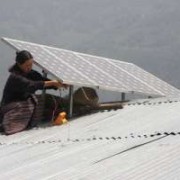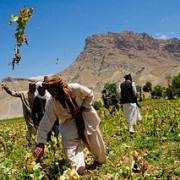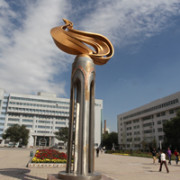Economics
 Economics
Economics
 Finance sector development, Industry and trade
Finance sector development, Industry and trade
 Finance sector development
Finance sector development
 Economics
Economics
 Energy
Energy
 Education, Regional cooperation and integration
Education, Regional cooperation and integration
 Economics, Finance sector development
Economics, Finance sector development
 Infrastructure
Infrastructure
 Education
Education

Importance of SMEs in the Thai economy
By Naoyuki Yoshino, Farhad Taghizadeh-Hesary, Phadet Charoensivakorn and Baburam Niraula. Posted July 31, 2015

Small and medium-sized enterprises (SMEs) play a significant role in the Thai economy. In 2012 there were 2.7 million SMEs in Thailand (see Figure 1) comprising 98.5% of total enterprises. In the same year, SMEs accounted for 37.0% of gross domestic product (GDP) and 80.4% of the workforce. Thai SMEs also contributed to 28.8% of total exports and 31.9% of total imports by value in 2012.
East Asian bond markets entering choppy waters

After years of smooth sailing through calm market conditions, bond markets in East Asia are navigating through stormier weather. Data from the supplement to the 2015 Asian Development Outlook released this week shows that weaker growth in the United States and the People’s Republic of China (PRC) has weighed down overall regional growth.
Japanese banks’ appetite for economic partnership agreements

When viewed through the lens of trade deals negotiated with the Association of Southeast Asian Nations (ASEAN), Australia, and the Trans-Pacific Partnership (TPP), Japan has shown recent willingness to engage in global free trade. However, is there any indication that these deals are striking a chord where it matters most, with Japan’s services sector, which comprises 70% of its economic activity?
Loan-to-value policy as a macroprudential tool: The case of residential mortgage loans in Asia

The global financial crisis of 2007–2009 underlined the need for central banks and financial regulators to take a macroprudential perspective on financial risk, i.e., to monitor and regulate the buildup of systemic financial risk in the economy as a whole, as opposed to simply monitoring the condition of individual financial institutions (microprudential regulation). This has been highlighted in numerous reports, e.g., G30 (2009), IMF (2009), Brunnermeier et al. (2009), and TdLG (2009). The regulatory response to this in advanced economies, under the guidance of the G20 and the Financial Stability Board, has tended to focus on strengthening the liability side of banks’ balance sheets by enforcing stricter capital adequacy requirements, including the introduction of a countercyclical buffer and the introduction of liquidity requirements (see, e.g., BIS 2010a).
Impacts of oil prices on emerging and developed economies
By Farhad Taghizadeh-Hesary, Naoyuki Yoshino, Majid Mohammadi Hossein Abadi and Rosa Farboudmanesh. Posted June 26, 2015

In recent years, the sharp increase in oil prices that began in 2001 and the two sharp declines that followed in 2008, due to the subprime mortgage crisis, and at the end of 2014–early 2015 have renewed interest in the effects of oil prices on the macro economy. Most recently, the price of oil has more than halved in a period of less than 5 months since September 2014. After nearly 5 years of stability, the price of a barrel of Brent crude oil in Europe fell from over $100 per barrel in September 2014, to below $46 per barrel in January 2015.
Energy strategies must consider all parts of the ‘energy trilemma’

As we gather this week for the 2015 Asian Clean Energy Forum, the context for our meeting has changed greatly from that of last year. We have seen a dramatic drop in the price of oil, which has sent shockwaves through the entire energy sector. Volatility is the new normal, and, for a sector known for its conservative outlook, this drives those at the forefront of the energy challenge to re-evaluate traditional norms. However, we see that it is not just price shocks that keep energy leaders awake at night: extreme weather and large-scale accidents/disruptions top the list of issues facing energy leaders in Asia.
Scholars, policymakers, and international affairs: Finding common cause

Any attempt to bridge the divide between scholars and policy-makers in international affairs is so welcome that I couldn’t help but applaud this book. The sad truth, however, is that after reading it I am even more convinced that the divide is a chasm.
Currency arrangements in the Pacific—time to re-think?

The Pacific developing member countries (DMCs) of the Asian Development Bank are a heterogeneous group of economies with different levels of economic development and economic size. However, when it comes to choosing an optimal exchange rate, the Pacific DMCs face similar challenges. All of the Pacific economies are relatively small and have underdeveloped financial and exchange rate markets.
The case for connecting South Asia and Southeast Asia

The time is ripe for enhancing economic integration between South Asia and Southeast Asia. The new “normal” era of slow growth in advanced industrial economies following the global financial crisis suggests that Asian economies will need to rely more on domestic and regional demand to secure inclusive growth. The recent slowdown in growth in the People’s Republic of China suggests further grounds for tapping growth opportunities between South Asia and Southeast Asia.
Asia: The next higher education superpower?

In most higher education discourse today it is not unusual to hear the claim that the world’s center of gravity is shifting toward the East. Indeed, no region has undergone as profound a transformation as Asia during the past half-century, from the 1970s to the present. Unprecedented economic growth has driven major social and demographic change and institutional reform and, in most countries, has brought about greater stability. The advent of a large middle class, coupled with openness and market reforms driven by economic imperatives, has contributed to greater interconnectedness among Asian states and between them and the rest of the world.


Search
Subscribe / Connect to Asia Pathways
Subjects
- Accelerating Progress in Gender Equality
- Addressing Remaining Poverty and Reducing Inequality
- Agriculture and natural resources
- Capacity development
- Climate change
- Economics
- Education
- Energy
- Environment
- Finance and Innovation
- Finance sector development
- Gender
- Globalization and Economic Stability
- Governance and public sector management
- Health
- Industry and trade
- Information and Communications Technology
- Infrastructure
- Making Cities More Livable
- Miscellaneous
- Population
- Poverty
- Private sector development
- Regional cooperation and integration
- Sanitation
- Social development and protection
- Strengthening Governance and Institutional Capacity
- Subjects
- Transport
- Uncategorized
- Urban development
- Video Blog
- Water
Recent Posts
- From Crisis to Resilience: The Evolution of the Banking Sector in Asia and the Pacific
- Tariffs on the Table: What Could Be Asia’s Next Move?
- Investing in Childcare a Win for Women and the Economy
- Flush and Flourish: Upgraded Toilets Can Transform Lives in Rural Asia
- New Ways for Climate Finance and Development in Asia and the Pacific




Recent Comments